Why An Estimated Tax Checkup May Be Necessary
It’s not a major disaster if you owed some money when you filed your return-after all, you’d rather have the use of the funds for as long as possible. But what you want to avoid is having to pay the IRS a penalty for underpaying your taxes during the year. If you owe the estimated tax underpayment penalty, which is nondeductible, you’re in effect paying the IRS interest for part of the money you should have prepaid during the year for taxes, but didn’t. On the other hand, if you got a big refund on last year’s return, you made an interest-free loan to the government-something you may want to avoid this year. If that happened, you should consider reducing the amount of withholding taken from your salary and/or the amount of estimated tax payments you make.
Here are some pointers to keep you on even keel when it comes to estimated taxes.
Basic rules. There is no estimated tax underpayment penalty for the 2016 tax year if the total tax on your return reduced by withholding (but not by estimated tax payments) is less than $1,000. If the amount owed on an individual income tax return comes to $1,000 or more after subtracting withheld tax, the estimated tax underpayment penalty generally won’t apply if your “required annual payment”-i.e., the amount that must be prepaid during the year in the form of withheld tax and estimated tax payments-equals at least the smaller of two amounts:
(1) 90% of your tax bill for 2016, or
(2) 100% of your tax bill for 2015.
For example, let’s suppose your tax bill for 2015 was $12,000, and your tax bill for 2016 will come to $15,000 (90% of which is $13,500). In this case, you must prepay at least $12,000 of your tax bill during 2015 to avoid the underpayment penalty. On the other hand, if the tax you will owe for 2016 will only be $10,000, you will have to make timely estimated tax payment of only $9,000 for 2016 to avoid the penalty.
A tougher rule applies if your adjusted gross income for 2015 exceeded $150,000 ($75,000 for married persons filing a separate return). During 2016, to avoid the underpayment penalty, you must prepay the smaller of (1) 90% of the tax for 2016, or (2) 110% of the tax for 2015.
Note that the IRS can waive an underpayment penalty if you didn’t make the payment because of a casualty, disaster, or other unusual circumstance, and it would be inequitable to impose the penalty. The penalty also can be waived for reasonable cause during the first two years after you retire (after reaching age 62) or become disabled.
It’s a pay-as-you-go system. In general, one-quarter of your required annual payment must be paid by April 18, 2016, June 15, 2016, September 15, 2016, and January 17, 2017. Keep in mind that tax withheld from your salary is treated as an estimated tax payment, and that an equal part of withheld tax generally is treated as paid on each installment date.
You may be able to make smaller payments under the annualized income method, which is useful to people whose income flow is not uniform over the year, perhaps because of a seasonal business. You may also want to use the annualized income method if a significant portion of your income comes from capital gains on the sale of securities which you sell at various times during the year.
Time for a checkup. Although you now know what your 2015 tax bill came to, you probably don’t quite know what your 2016 tax will be. While it can’t be predicted with absolute certainty, I can project what your 2016 tax will be based on your financial picture thus far, as well as on events you anticipate will occur and transactions you anticipate finalizing in the balance of this year. It would be a good idea for us to get together well in advance of the second estimated tax installment, due June 15, to see how your payments are tracking and make any necessary adjustments to your wage withholding and/or estimated tax payments. Keep in mind that our review of your situation may discover that you’re withholding too much rather than too little.
We should also review whether changes in your personal or financial situation require a change in estimated tax payments or withholding. For example:
. . . If one of your children graduated college in January and is working and supporting himself, you will have one less dependency exemption deduction for the year and may need to file a new W-4 to increase withholding.
. . . If you anticipate having substantial investment income in 2016, you may be subject to the net investment income tax (NIIT), a surtax equal to 3.8% of the lower of your net investment income or the excess of your modified adjusted gross income over a threshold amount (e.g., $250,000 for joint filers or surviving spouses). The NIIT may need to be included when you figure estimated tax.
. . . If you intend to retire mid-year, you may wind up in a lower tax bracket for the 2016 tax year and may want to reduce your withholding.
. . . An IRA-to-Roth-IRA rollover results in taxable income. If you make such a rollover this year, the income from it must be included in estimated tax calculations.
If you have any questions or would like to sit down with us to discuss 2016 tax planning strategies, please contact us. We would love to help you out!
CAPATA




